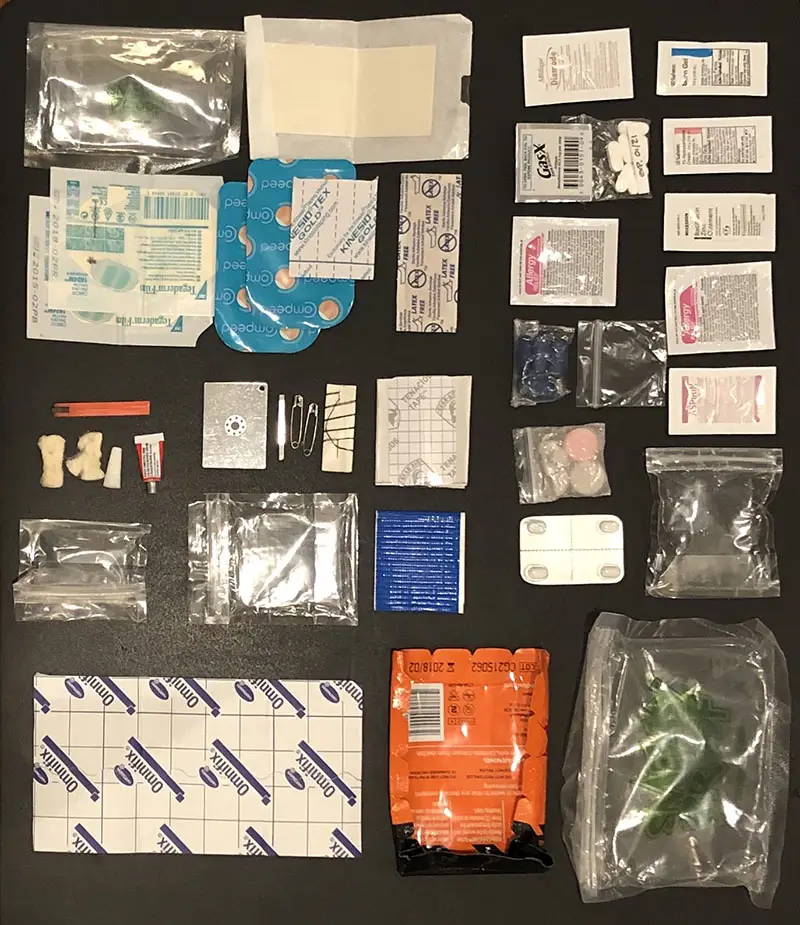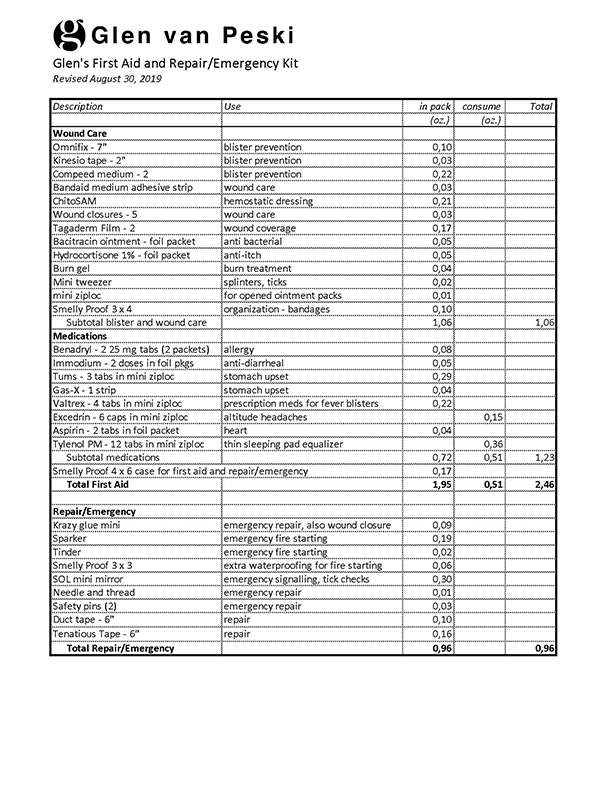First Aid
Thoughts from Gossamer Gear’s Founder on Creating a Minimal, Essential First Aid Kit
A first aid and emergency kit is an essential piece of gear for any backcountry excursion. While it may seem like an easy place to cut weight in your pack, it’s important to balance that desire with the realities of the trail. While you may never use some pieces of your kit, you may come across another person who needs the item, or someone in your hiking group might need something you have. At their least, these kits can help soothe your hot spots, and their most, they can save a life.
Many of the questions Gossamer Gear gets from backpackers are about wondering how much they should really bring in their first aid and emergency kit. So, we turned to our founder, Glen Van Peski, to see what his decades of lightweight backpacking experience have taught him about creating the perfect Backpacks Shelters Trekking Poles More Gear Light Feet Blog About Usminimal, but essential first aid kit.
Gossamer Gear: So, what exactly do you pack in your first aid and emergency kit, and why?
Glen: The contents of my first aid and repair kit are a function of what I’ve experienced in the past, either personally or with other people on the trip. With the exception of the ChitoSAM, I have used everything on this list (see below) at least once.
I don’t often personally get blisters, but Omnifix or Kinesio tape is great for treating hot spots before they get to the blister stage. If that doesn’t do it, the Compeed strips with their gel pads are usually great – you stick them on and, if the area is clean and dry, they will stay on for days protecting the blister. As I age, and hike with other older people, our skin is thinner and more fragile, so scrapes can bleed profusely. I’ve used the wound closures and Tagaderm bandages to fix up large cuts from grazing sharp talus.
I am prone to fever blisters, especially with the sun and exertion that comes with backpacking, which is why I carry the Valtrex, a prescription medicine. When I lived at sea level, it was not uncommon to have touches of altitude sickness for the first day of a trip in the Sierra, so I carried Excedrin. It includes caffeine, which, assuming you drink lots of water with it, helps rebalance the pH of your blood and relieves the altitude symptoms. Tylenol PM helps me get to sleep the first couple of nights of a trip, until I adapt to nights on the ground atop my 2.3 oz. torso pad of 3/8” foam.
Any tips for how to store your first aid kit and its items?
I use a tough 4” x 6” Ziploc, currently the Smelly Proof brand. I have had to wade streams and don’t use a pack cover, so I want to know that my first aid and emergency supplies will stay together and stay dry. I tend to group things within the kit, so that I can quickly get to items I need without having to search
through the entire kit.
Over the last few years, I’ve taken to ordering the medications from minimus.biz, so they come in individually labelled packets. I used to just put a few pills in a mini Ziplock. When I still have to do that, I cut out the tiny cardboard piece from the box that includes the medication name and then write the expiration date on the back. My thinking is that if I’m incapacitated or someone else is trying to use my first aid kit, they will be able to tell what everything is.
How do you make sure you’ve replenished your kit after each trip?
For anything I use on a trip, I leave the wrappers in the kit. When I get home, I go through and replenish the used items, so it’s always ready to go, along with the rest of my gear. Typically, at some point during the winter when I’m not backpacking, I’ll go through and check expiration dates and order any new supplies I need to have on hand for resupply between trips.
Has your first aid kit changed much over the years? How have you balanced safety with weight?
My first aid kit has remained fairly constant over the years, although there’s been some refinement. It’s geared toward trips of a week or less because those are the trips I take. For a thru-hike, I would make adjustments. I’m not a medical professional, and have no special training other than a Wilderness Advanced First Aid course a number of years ago. The contents are based on issues I’ve encountered on trips over the last 20 years.
Apart from the Tylenol PM and the Excedrin, I rarely use any of it personally. A more likely case is that I use it for other people on a trip. It is often to help people who are carrying a much more substantial kit themselves, but they don’t happen to have the one item that they are in need of.
I could certainly lighten it up a lot, but most of the items in it have come in useful for treating other people.
Beyond a first aid kit, how can hikers be prepared for and prevent medical emergencies in the backcountry?
Like much of ultralight backpacking, your skills play a part. Not just skills in treatment of wounds and common backcountry maladies, but experience in planning and executing a trip where you don’t get into trouble in the first place. There’s an expression that any time you head into the wilderness, you’re “three bad decisions away from not coming back.”
When you review reports of people who perished in the backcountry, it’s typically a series of errors in judgement. Doing proper research on the route, anticipated weather conditions, and the fitness and expertise of your companions, can all be crucial depending on the trip. Making sure that the demands of the trip are within your experience level will help keep you out of trouble, and make sure you return safely to plan the next trip.

